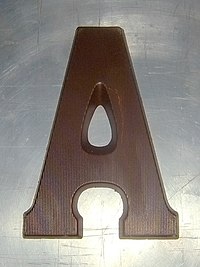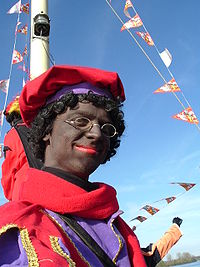Offtopic: Coca Cola no tiene culpa del color de Santa Claus
19 diciembre, 2007 a las 8:51/ por moscacojonera
«Igualmente, ya en el siglo XX, la empresa Coca-Cola encargó al pintor Habdon Sundblom que remodelara la figura de Santa Claus/Papá Noel para hacerlo más humano y creíble. Esta versión data de 1931.
En este punto, sin embargo hay aclarar que es solo una leyenda urbana la creencia de que el color rojo y blanco de Santa Claus tenga su origen como tal, aunque sí su popularización, en los spots que la marca Coca-Cola empezó a hacer a partir de 1931. Esto ya que hay muchas ilustraciones y descripciones casi fidedignas anteriores al spot como la de Thomas Nast [1] (1869) o St. Nicholas Magazine(1926), entre otras; eso sin considerar además las antiguas representaciones religiosas del obispo San Nicolás de Mira ó San Nicolás de Bari, en las que es común el color rojo y blanco de la vestimenta religiosa.
Por ello, si bien es cierto que desde mediados de 1800 hasta principios de 1900 no hubo una asignación concreta al color de Santa Claus, siendo el verde uno de los más usados; sí se considera que su campaña masiva sí fue una de las principales razones de por qué Santa Claus terminó vestído de color rojo y blanco, aunque no hayan sido los primeros en usarlos.»(De la castellawiki)
Eso sí, no es una leyenda urbana los otros temas serios en los que la misma marca sí está:
El imperio Coca-Cola también encuentra oposición en todos los rincones. Los eventos que la empresa organiza y patrocina (como la FIFA o los Juegos Olímpicos de Invierno de 2006), en los que muestra su cara más sana y amable, son ensombrecidos por manifestaciones y protestas ciudadanas. Los informes de ONG y movimientos sociales denunciando “la otra cara” de Coca-Cola también se publican por todo el mundo; y las acciones de protesta y boicot contra sus productos crecen, provocando no sólo un daño en la imagen de la marca sino también consecuencias reales a sus cuentas.
Porque Coca-Cola ha perdido contratos de ventas en al menos cinco universidades estadounidenses, entre ellas la Universidad de Michigan y la Universidad de Nueva York, donde se ha prohibido la venta de sus productos por los abusos cometidos en Colombia y la India. En este país, la multinacional ha visto cómo se cerraba una planta envasadora a causa de la presión de movimientos campesinos y de mujeres.
También en Europa encontramos ejemplos: la Red Italiana del Nuevo Municipio, que engloba a más de cien municipios, ha excluido la presencia de productos Coca-Cola de todos los distribuidores en la Administración, escuelas, institutos y comedores. Por todas partes surgen personas, redes ciudadanas, municipios, foros y caravanas que optan por otro tipo de consumo y que se han propuesto no ponerle las cosas fáciles a Coca-Cola. La lista continúa y es larga.
(De Diagonal)
Por cierto,…
¿sabían que en Holanda se dice que Santa Claus viene de España?. Le cuentan a los niños que si no son buenos, los envían a España, un sitio donde no van a parar de trabajar….
In the Netherlands, Saint Nicholas’ Eve, (December 5) is the chief occasion for gift-giving. The evening is called pakjesavond («presents’ evening»). Traditionally, presents are ingeniously wrapped, and are therefore called surprises. Also, presents are traditionally accompanied by a poem from Saint Nicholas.
Sinterklaas is the basis for the North American figure of Santa Claus. It was during the American War of Independence, that the inhabitants of New York City, a former Dutch colonial town (New Amsterdam) which had been swapped by the Dutch for other territories, reinvented their Sinterklaas tradition, as Saint Nicholas was a symbol of the city’s non-English past.[1] The name Santa Claus is derived from older Dutch Sinte Klaas.
Sinterklaas
The Sinterklaas feast celebrates the name day of Saint Nicholas (280–342), patron saint of children. Saint Nicholas was a Greek bishop of Myra in present-day Turkey and became the patron saint of children based on various legends that include resurrecting children from death and saving them from prostitution.
Sinterklaas has a long white beard, wears a red bishop’s dress and red mitre (bishop’s hat), and holds a crosier, a long gold coloured staff with a fancy curled top. Sinterklaas carries a big book with all the children’s names in it, which states whether they have been good or naughty (zoet of stout) in the past year.
He also rides a white horse (Schimmel-meaning «white horse») called Amerigo over the rooftops. In Flanders (Belgium) the horse is sometimes called «Slecht Weer Vandaag», meaning «Bad Weather Today». This name is of recent creation and was introduced by the VRT television series «Dag Sinterklaas» written by Hugo Mathyssen (1993). In the series Bart Peeters visits Sinterklaas (Jan Decleir) in his castle and finds out that Sinterklaas had gotten a new horse and couldn’t think of a name. When Zwarte Piet (Frans Van der Aa) entered Sinterklaas’ winter castle, Sinterklaas immediately asked if Zwarte Piet knew a name. Not having heard the question, Zwarte Piet said «Slecht Weer Vandaag», commenting on the weather. Sinterklaas thought Zwarte Piet was actually naming the horse, and the name stuck.
[edit] Zwarte Piet
-
Main article: Zwarte Piet
Sinterklaas is assisted by many mischievous helpers with black faces and colourful outfits, modelled after 16th century Spanish clothing. These helpers are called Zwarte Pieten (Black Petes) in Dutch (see below for names in other languages). During the Middle Ages, Zwarte Piet was a name for the devil. Having triumphed over evil, it was said that on Saint Nicholas’ eve, the devil was shackled and made his slave. Although the character of Black Pete later came to acquire racial connotations, his origins were in the devil figure. This racialisation is reflected in the reworking of the characters’ mythos. From about 1850, Pete was said to be an imported African servant of Saint Nicholas. Today however, a more politically correct explanation is given: Pete’s face is said to be «black from soot» (as Pete has to climb down chimneys to deliver his gifts). Nevertheless, the tradition has been accused of being racist, and attempts have been made to introduce Gekleurde Pieten (Coloured Petes), who are coloured blue, red, etc., instead of black. This phenomenon of «Coloured Petes» was introduced nationally in 2006. The explanation given for this was that «Sinterklaas passed through a rainbow with his boat».[2]
Traditionally Saint Nicholas only had one helper, whose name varied wildly. «Piet» or «Pieter», the name in use now, can be traced back to a book from 1891[3]. The idea that Sinterklaas has not one but many helpers was introduced by Canadian soldiers who had liberated the Netherlands during World War II and helped organise the first post-war Sinterklaas celebration.[citation needed]
In other regions where Sinterklaas is celebrated, like southern Belgium or Northern France, Saint Nicholas has different companions.
[edit] Arrival

Kruidnoten, small, round ginger bread-like cookies
Sinterklaas traditionally arrives each year in November by steamboat from Spain, and is then paraded through the streets, welcomed by cheering and singing children. Invariably, this event is broadcast live on national television in the Netherlands and Belgium. His Zwarte Piet helpers throw candy and small, round ginger bread-like cookies, kruidnoten or pepernoten, into the crowd. The children welcome him by singing traditional Sinterklaas songs. Sinterklaas also visits schools, hospitals and shopping centres. After this arrival all towns with a dock have their own intocht van Sinterklaas (arrival of Sinterklaas)
[edit] Shoe
Traditionally, in the weeks between his arrival and the 5th of December, before going to bed, children put their shoes next to the chimney of the coal fired stove or fireplace, with a carrot or some hay in it «for Sinterklaas’s horse», sing a Sinterklaas song, and will find some candy in their shoes the next day, supposedly thrown down the chimney by a Zwarte Piet or Sinterklaas himself. However, with the advent of central heating children put their shoes near the boiler or even just next to the front door.
Typical Sinterklaas candy is the first letter of the child’s name made out of chocolate, speculaas (a type of shortcrust biscuit), chocolate coins, a figurine of Sinterklaas made out of chocolate and wrapped in painted aluminium foil, and coloured marzipan shaped into fruit, an animal or some other object.
Children are told that Black Pete enters the house through the chimney, which also explains his black face and hands, and would leave a bundle of sticks (roe) or a small bag with salt in the shoe instead of candy when the child had been bad.
Children are also told that in the worst case they would be put in the gunny sack in which Black Pete carries the presents, and be taken back to Spain, where Sinterklaas is said to spend the rest of the year. This practice, however, has been condemned by Sinterklaas in his more recent television appearances as something of the past. Typical of that time was also the fact that the saint would have the names of every child written down in either his «golden book» (if a child had been good), or his «black book» (if a child had been bad) – very much like Odin‘s ravens reporting everything in the world to him. The standard joke would be that initially Sinterklaas would not be able to find the name in the «golden book», trying to scare the children. With modern views on child psychology, these practises have been abandoned as well.
[edit] Pakjesavond
Traditionally Saint Nicholas brings his gifts at night, and Belgian and many Dutch children still find their presents on the morning of December 6th. Later in The Netherlands adults started to give each other presents on the evening of the 5th; then older children were included and today in that country sometimes even the youngest on the evening of December 5 (Saint Nicholas’ eve), known as Sinterklaasavond or Pakjesavond (present evening). After the singing of traditional Sinterklaas songs, there will be a loud knock on the door, and a sack full of presents is found on the doorstep. Alternatively – some improvisation is often called for – the parents ‘hear a sound coming from the attic’ and then the bag with presents is «found» there. Some parents manage to «convince» Sinterklaas to come to their home personally.
Presents are often accompanied by a simple poem, saying something about the child or with a hint to the nature of the present.
When the presents are too bulky in size or when the quantity of presents is too large, they have to be snuck into the house while the kids are distracted.
Another aspect of «pakjesavond» are the small poems people make. When children become too old to believe in Sinterklaas, they will be introduced to a different form of entertainment during this night. People will write small personal poems for friends and family usually accompanied by a small gift or candy. This way it is also entertaining for parents and other adults. Students usually write teasing and embarrassing stories for each other. But this is expected and are received in good spirit.



